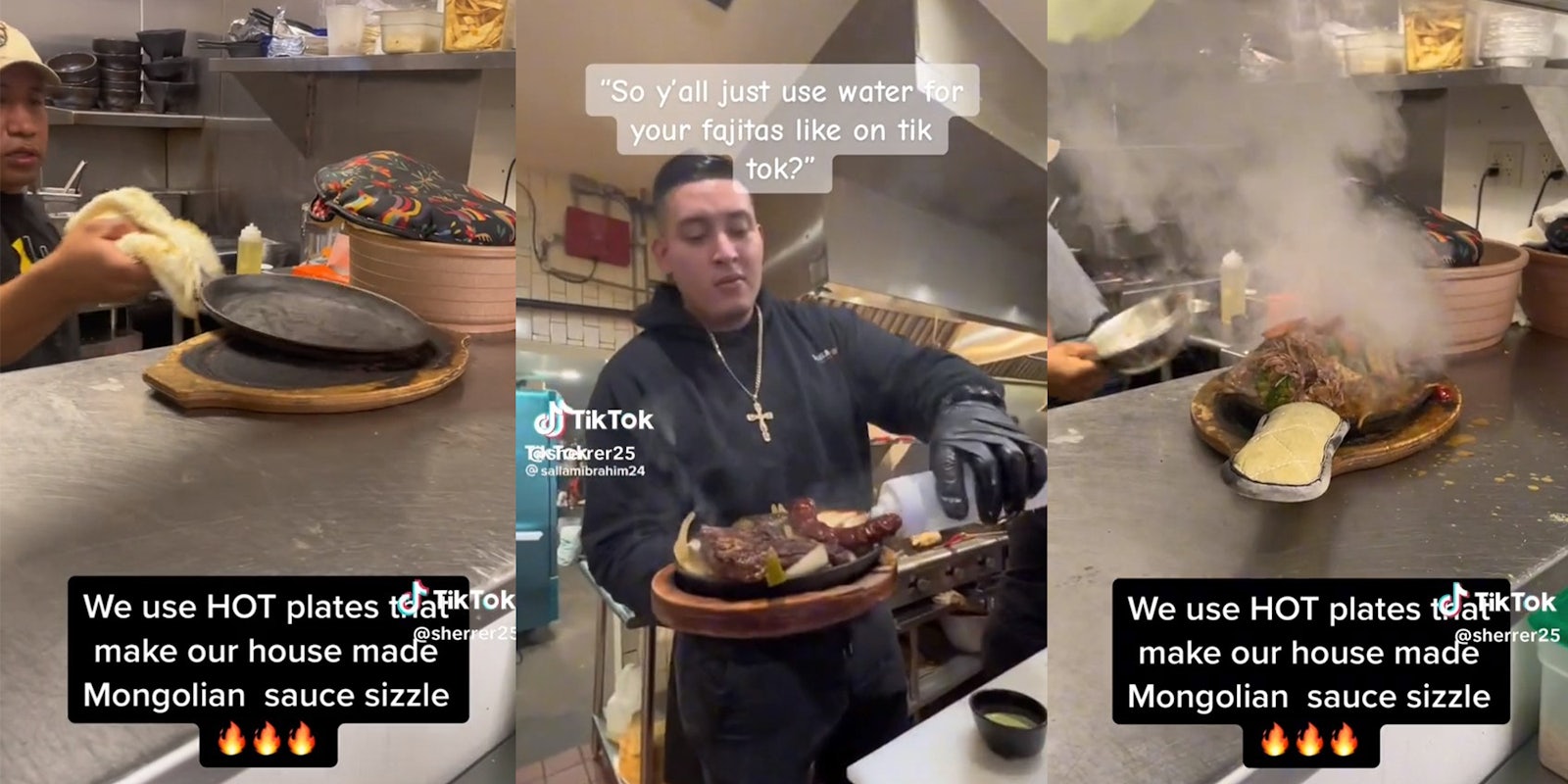Earlier this year, a scandal emerged on TikTok. According to user @sallamibrahim24, the famous sizzle that accompanies fajitas was not, in fact, a natural byproduct of its creation, but an effect added by pouring water onto a hot plate.
This led to many disappointed commenters, with one notable remarking that their “whole life it’s been a lie.”
Seeing this video, TikTok user Erin (@sherrer25) was confused. According to her, in a video with over 266,000 views, her restaurant achieves its steamy presentation naturally by pouring the meat and vegetables—including the restaurant’s “house made Mongolian sauce”—onto a hot plate.
The restaurant in question is Lalo Chino Latino Kitchen in Cincinnati, Ohio.
@sherrer25 My boss said y’all better quit playin with her #fajita #cumbia #restaurant #fyp #server ♬ Cumbia Buena – Grupo La Cumbia
A 1993 article in Texas Monthly notes that steam was not originally part of a fajita’s presentation. Instead, the dish originated in Texas as a way to eat a particularly tough cut of meat.
“The lowly cowboys and Mexican vaqueros get the tough cuts, including the fajita, or skirt steak,” writes John Morthland. “Throwing the thin flavorful meat directly over hot coals, the cook sears it quickly, wraps it in tortillas to catch the dripping juices, and serves it taco style. Fajitas are born.”
The article goes on to note that the “sizzle” was a 1960s invention from a woman named Otilia Garza at an eatery called Round-Up Restaurant in Texas. Inspired “after being served queso flameado (melted Mexican cheese) on a cast-iron plate in Acapulco,” she opted to present the restaurant’s fajitas on a hot plate steaming in their own juices—a trend that became popular as the dish spread throughout the United States.
Nowhere in this story comes a mention of adding additional water to achieve the fajita’s steamy effect.
However, that doesn’t mean there may not be a little deception going on in modern fajita presentations. A user on Reddit claimed in a 2014 thread that Chili’s achieves its trademark fajita sizzle using what they call “sizzle sauce”: a mix of soy sauce and oil.
Yet, the sizzle shown by Erin appears to be authentic, and many commenters claim that their restaurants have also achieved authentic sizzles.
“We always hit it with a little lime juice before it left the kitchen,” wrote one user. “Gave it the sizzle and a little extra taste.”
“What do people think is sizzling? it has to be a liquid boiling,” added another. “At least the sauce is an actual part if the meal and not water squirted on top.”
The Daily Dot reached out to Erin via TikTok comment.




